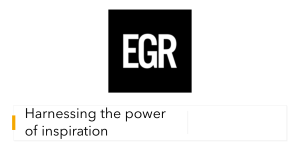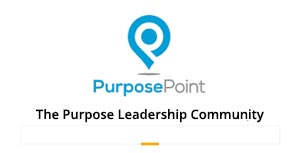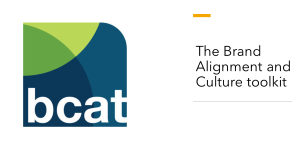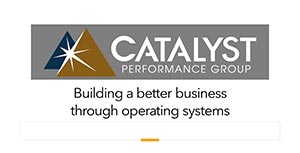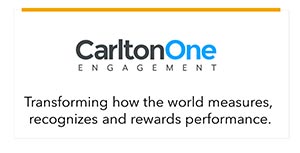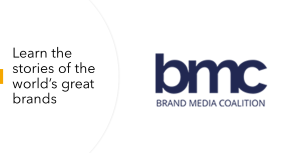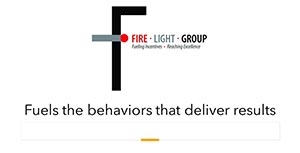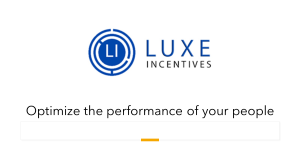How Total Quality Management Demonstrates the Path to Smarter Engagement Strategies
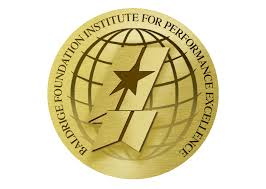 Every year, Gallup and American Customer Satisfaction Index report near record low employee and customer engagement scores, and yet human resources and marketing departments continue to use the same rewards and recognition playbook. Here’s what management in human resources and marketing can learn from the world of total quality management.
Every year, Gallup and American Customer Satisfaction Index report near record low employee and customer engagement scores, and yet human resources and marketing departments continue to use the same rewards and recognition playbook. Here’s what management in human resources and marketing can learn from the world of total quality management.By Bruce Bolger
Selection Criteria
Recent (2024) Winners and How They Measure Success
Click here to subscribe to the ESM weekly e-newsletter.
What does Total Quality Management (TQM) have to do with enterprise engagement and stakeholder management? Everything, as exemplified by the Baldrige Performance Excellence Award. An act of Congress created it in 1987 under the Malcolm Baldrige National Quality Improvement Act (Public Law 100-107) to promote improved quality of goods and services in US companies and improve competitiveness. Officially a Presidential-level award, first presented in 1988, it was created at the height of the Japanese success at disrupting the US automotive and other manufacturing industries using the principles of total quality management (TQM) principles of W. Edwards Deming, whose work was largely disregarded during that time in the US.
Today, the program is managed by NIST (National Institute of Standards and Technology), with help from American Society for Quality (ASQ). As is clear below, the qualifications for the Baldrige award largely follow the principles of stakeholder capitalism, enhancing returns for investors only by creating value for customers, employees, distribution and supply chain partners, communities, and the environment.
- Revenue growth and financial stability, showing both level and trend.
- Workforce metrics: size, turnover, employee satisfaction, and engagement.
- Customer/client metrics: repeat business rates, satisfaction, willingness to recommend.
- Benchmarking versus peers / industry / national percentiles (e.g., “top 10%” in certain measures).
- Market expansion or client base growth.
- Operational efficiency and deployment of processes, process improvements.
- Innovation / strategic planning effectiveness, including transparency and alignment with mission.
- Long‐term outcomes and resilience, not just short‐term gains.
Selection Criteria
There are nine (as of the most recent version, 2025) broad categories under which organizations must show both processes and results. They include:
- Organization description (context)
- Leadership and governance
- Operations
- Workforce
- Customer and markets
- Finance
- Strategy
- Organizational learning
- Community relationships (NIST)
Scoring: emphasis on metrics and results. Measurement is a major component. In particular: Organizations must show results in terms of performance levels, trends (i.e. improvement over time), comparisons (benchmarks, competitive comparisons, or external standards) and integration (how well results are aligned, used, and connected across processes and stakeholders).
There is also evaluation of process dimensions: how well key processes are designed; how widely deployed, how well learning, improvement, innovation happen and how integrated the processes are within the organization.
Key metrics and measurement takeaways. From the criteria and recent winners, impact metrics include:
- Revenue growth and financial stability, showing both level and trend.
- Workforce metrics: size, turnover, employee satisfaction and engagement.
- Customer/client metrics: repeat business rates, satisfaction, willingness to recommend.
- Benchmarking versus peers, industry, national percentiles (e.g., “top 10%” in certain measures).
- Market expansion or client base growth.
- Operational efficiency, deployment of processes, process improvements.
- Innovation, strategic planning effectiveness, including transparency and alignment with mission.
- Long‐term outcomes and resilience, not just short‐term gains.
Recent (2024) Winners and How They Measure Success
Here are some of the 2024 Baldrige Award recipients and specific metrics / success indicators they used (that were reported publicly):
Freese and Nichols, Inc. (Service / Consulting / Engineering-Architecture etc.)
- Tripled workforce since 2010 (to over 1,200) and revenue from about $83 million in 2010 to US$325 million in 2023.
- Maintained a 85% or greater repeat business rate across over 650 unique clients.
- Increased number of clients that make up 80% of revenue (from 88 to 113 over four years);
- High rankings on workforce satisfaction / engagement in top 10% nationally.
- Strategic planning transparency: regular reporting to employees (end-of-month, mid-year updates).
- Some of their metrics include patients’ willingness to recommend (top 10% nationally) and low workforce turnover.
- Metrics around clinical / population health outcomes though those are less detailed in the summary.
- “March to a Million” journey: 1,091,563 people insued out of 3 million population.
- Metrics also include retention.
- Among their metrics: ranked in top 10% nationally for police and fire services, emergency preparedness, parks, overall city services.
- Employee satisfaction (“nearly 100% of the city’s employees indicate they like the kind of work they do”) (NIST)
- It is the first higher-ed institution to win twice, which implies sustained educational outcomes institutional performance.
- Metrics include student completion rates, job placement, affordability, etc. Though specifics weren’t in the summary).
Enterprise Engagement Alliance Services
 Celebrating our 15th year, the Enterprise Engagement Alliance helps organizations enhance performance through:
Celebrating our 15th year, the Enterprise Engagement Alliance helps organizations enhance performance through:1. Information and marketing opportunities on stakeholder management and total rewards:
- ESM Weekly on stakeholder management since 2009. Click here to subscribe; click here for media kit.
- RRN Weekly on total rewards since 1996. Click here to subscribe; click here for media kit.
- EEA YouTube channel on enterprise engagement, human capital, and total rewards since 2020
 Management Academy to enhance future equity value for your organization.
Management Academy to enhance future equity value for your organization.3. Books on implementation: Enterprise Engagement for CEOs and Enterprise Engagement: The Roadmap.
4. Advisory services and research: Strategic guidance, learning and certification on stakeholder management, measurement, metrics, and corporate sustainability reporting.
5. Permission-based targeted business development to identify and build relationships with the people most likely to buy.
Contact: Bruce Bolger at TheICEE.org; 914-591-7600, ext. 230.






